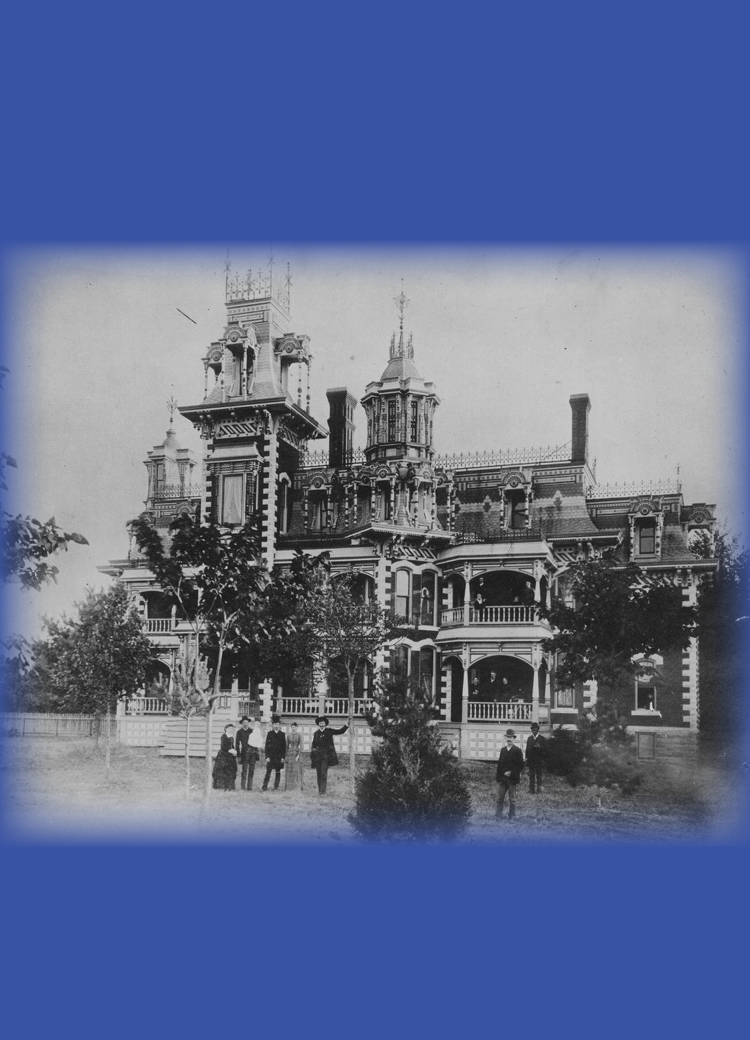Anatomy of a Folly: The history of Topeka's peculiar mansion
Anatomy of a Folly: the history of Topeka’s peculiar mansion
One of the most awe-inspiriting homes in Kansas sat just southeast of 17th and Gage. While it is now the grounds for Most Pure Heart of Mary Catholic Church, the home that came to be known as “Stone’s Folly” once stood alone on the treeless prairie just outside of Topeka’s city limits. Its brief history seems almost too bizarre to be true: an eccentric millionaire, the birth of a religious movement, a vice den and a mysterious fire! But in the case of Stone’s Folly, truth is most definitely stranger than fiction.
Erastus Stone’s Castle
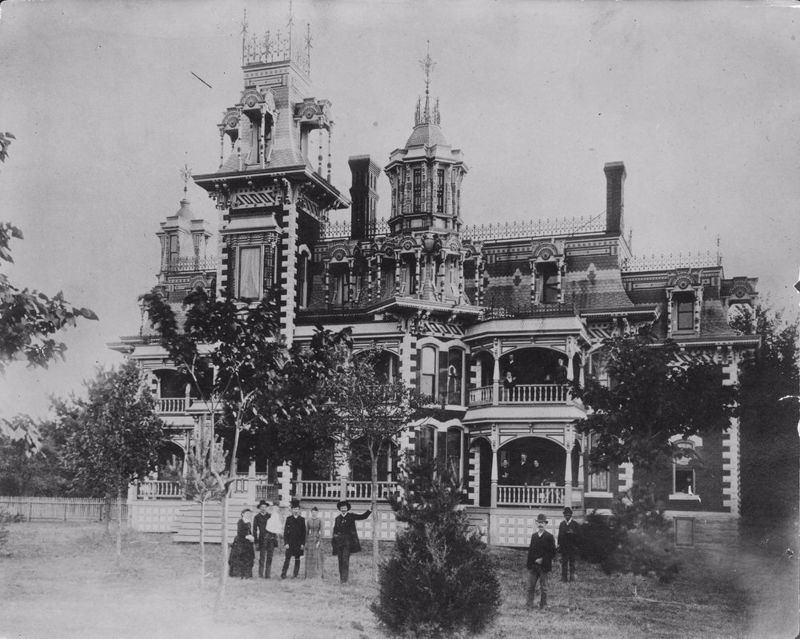
Erastus Stone’s mansion was one of the fanciest – and most expensive – homes in Topeka. (Image courtesy of kansasmemory.org, Kansas State Historical Society, Copy and Reuse Restrictions Apply)
The mansion that would come to be known as “Stone’s Folly” was built in 1887 by Erastus R. Stone, a wealthy Topekan who had made his money as a nurseryman, specializing in fruit trees. Stone also dabbled in real estate development, purchasing a 30-acre tract of land southeast of what is now 17th and Gage. He platted most of the land – turning a profit of $20,000 – and set aside a 10-acre plot for himself.
Stone’s dream was to own the finest mansion in the state, so he set about building a home that he designed to look like a medieval castle with Chinese, Japanese and Middle East embellishments. The exterior was made of red brick, with white stone at the corners and around the windows. The house was three stories tall and was surmounted by two ornately decorated cupolas. Inside the mansion had intricately carved staircases. Its 18 rooms were decorated with cedar, cherry and bird’s eye maple woodwork.
Sadly, Erastus Stone never spent a single night in his dream castle. The real estate boom, where Stone had made most of his fortune, collapsed. A severe drought also affected Stone’s fruit tree business. Even though he had already invested $30,000 (about $1.1 million today), Erastus Stone was forced to sell the mansion before workers could complete the rooms on the third floor.
For the next decade, the house – which became known among locals as “Stone’s Folly” – sat empty. Due to the continued economic depression, not many families were looking to buy a large, partially completed home. It still drew attention from Topekans, even while empty. Paul Lovewell, who grew up nearby, later said the “castle-like appearance added a sort of mystic atmosphere to the almost barren stretch of prairie west of Washburn College.”
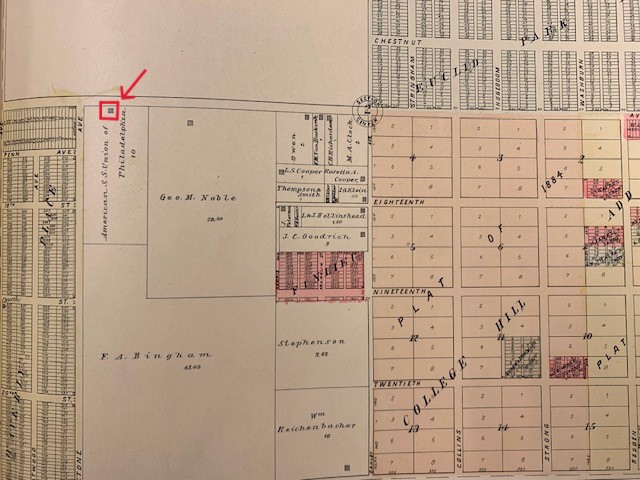 The small square highlighted here shows the location of Stone’s Folly. When this map was created, the land had been sold the American Sunday School Union of Philadelphia.
The small square highlighted here shows the location of Stone’s Folly. When this map was created, the land had been sold the American Sunday School Union of Philadelphia.
Parham and the Bethel College
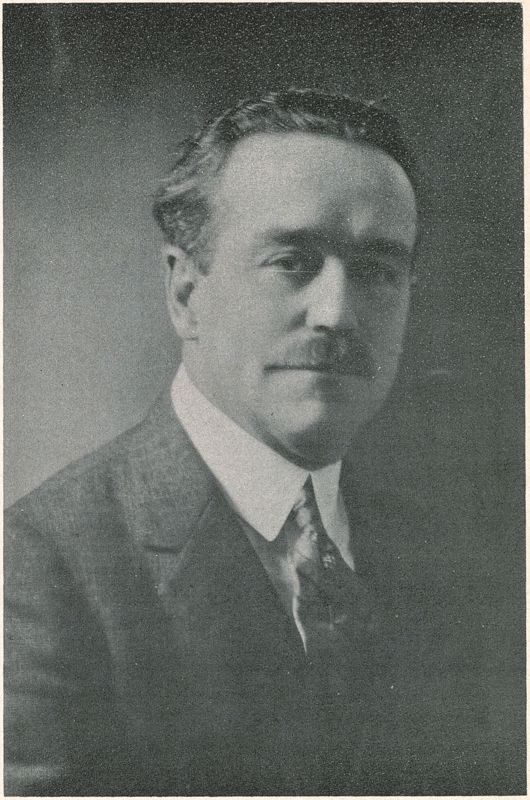 In 1900 the large empty mansion caught the eye of Reverend Charles Fox Parham. Parham and his wife had been operating the Bethel Healing Home at 4th and Jackson. They claimed to use their spiritual healing gifts and taught others how to become spiritual healers.
In 1900 the large empty mansion caught the eye of Reverend Charles Fox Parham. Parham and his wife had been operating the Bethel Healing Home at 4th and Jackson. They claimed to use their spiritual healing gifts and taught others how to become spiritual healers.
Parham was born in Muscatine, Iowa, in 1873 and later moved with his family to Kansas. He was ordained as a Methodist minister at the age of 17 and was known as “the Boy Preacher.” Parham later left the Methodist church over their lack of belief in his powers of spiritual healing and turned to a career as an evangelist.
Parham and his wife, Sarah, had a small but fervent following. The group believed they needed nothing but prayer to survive. As Parham explained: “We ask God for food and raiment and we receive them. I have started out many a day without a cent and returned with $25; my prayers had been answered.” The group published their own bi-weekly newspaper, The Apostolic Faith, which mostly served to print testimonials to “Brother” Parham’s ability to heal through prayer.
As their following began to outgrow their rooms at 4th and Jackson, Parham decided the old Stone mansion would be a perfect place for his students. Its location outside the city limits and away from the “sin and vice” of central Topeka was ideal. Almost immediately upon moving in, the group decided the highest of the mansion’s two towers would be used as their “prayer tower.” Twenty-four hours a day, seven days a week, a member of Parham’s newly christened “Bethel College and Bible School” had to be in the prayer tower beseeching the almighty to bless the students with the Holy Spirit, while looking for signs of the second coming of Christ.
“The Topeka Outpouring”
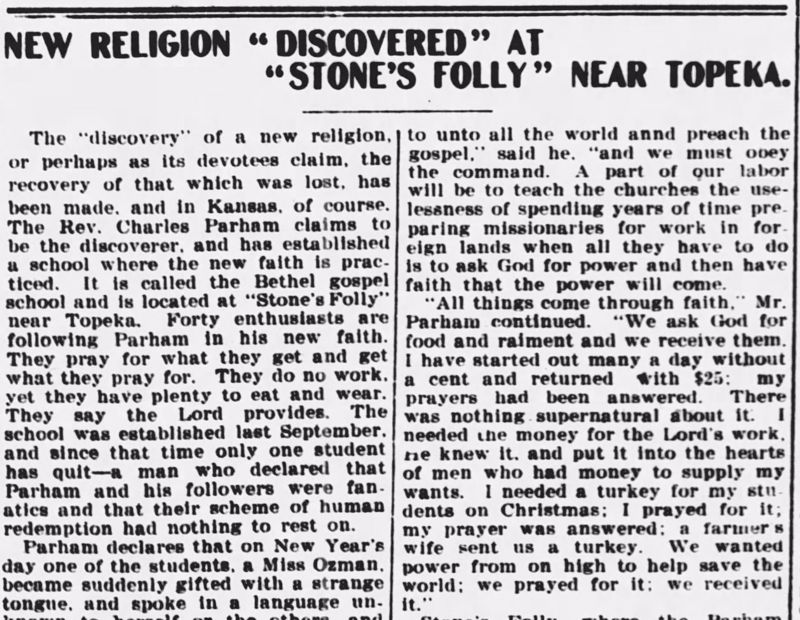 The Mail and Breeze (Topeka, KS), February 22, 1901, p. 4
The Mail and Breeze (Topeka, KS), February 22, 1901, p. 4
On January 1, 1901, after months of continued prayer, something happened at Stone’s Folly that gave rise to a new religious movement. As Charles Parham recalled years later:
Sister Agnes N. Ozman, (now LaBerge) asked that hands might be laid upon her to receive the Holy Spirit as she hoped to go to foreign fields. […] I laid my hand upon her head and prayed. I had scarcely repeated three dozen sentences when a glory fell upon her, a halo seemed to surround her head and face, and she began speaking in the Chinese language, and was unable to speak English for three days.
Soon, others began speaking in tongues and claimed this gift had been given to them by the Holy Spirit. Parham saw this phenomenon as a “rediscovery” of what transpired in the Bible, particularly when Jesus’s disciples “saw what seemed to be tongues of fire that separated and came to rest on each of them. All of them were filled with the Holy Spirit and began to speak in other tongues.”
Local newspapers carried the story of the odd goings-on at the old Stone mansion, most of them treating the story as more of a joke. Some of Parham’s followers left the group, claiming the speaking in tongues was just an act to garner publicity for their beliefs. Parham, however, continued to espouse what he saw as a modern miracle and began to receive requests to speak from groups around the Midwest.
But just as the group was becoming more widely known for its “performances for the press of actually speaking in tongues,” the mansion was sold out from under them. This did not deter Parham, who moved his group to Houston, Texas, where they continued to proclaim theirs was a gift from the Holy Spirit. Parham’s movement grew into what is now known as Pentecostalism. Even today, Pentecostals see New Year’s Day, 1901, at Stone’s Folly as the birthplace of their church.
A Den of Vice
The Stone mansion was sold in 1901 to infamous local, Harry Croft. Croft was well-known to Topeka law enforcement as a “jointist” – a bootlegger and gambling house proprietor. After winding up on the wrong side of the law several times, Croft proclaimed he was going straight and bought the property to establish a large chicken ranch.
Less than a month later, however, the Topeka State Journal reported Stone’s Folly had been “transformed from a Bible school into a gaudily furnished road house.” Rumor was that Croft chose the place because it was located outside the Topeka Police's jurisdiction. Croft’s neighbors began to complain that groups of “hack parties” leaving the house drove wildly on the road back to town whilst heavily intoxicated, leading to several carriage wrecks. It got so bad that Washburn College, which was less than a mile away, declared female students should cease walking on that road for their own safety.
In late October 1901, authorities raided Stone’s Folly. While they didn't find liquor on the property (the papers believed Croft was tipped off), both Harry Croft and his brother were arrested and charged with two counts of sales of liquor and one count of maintaining a nuisance. They were later convicted and sentenced to 60 days in jail, as well as an $800 fine.
The End of the Folly
Only a few weeks after Harry Croft’s conviction, his wife appeared at the door of a neighbor’s house, screaming that her home was on fire. By the time the fire department arrived with their chemical engine, it was too late to save the building. Before noon on December 6, 1901, Erastus Stone’s magnificent mansion was reduced to ash.
The cause of the fire was never determined. Some speculated it was a faulty flue in the kitchen fireplace. Others pointed out that, one the week before, Harry Croft had removed most of the valuable furniture from the house. Perhaps Croft set fire to the building to collect the $5,000 insurance policy.
The land later passed into the hands of the Owens family, who built a home on the site in 1905. They lived there until 1946, when they sold the property to establish the Most Pure Heart of Mary Catholic Church.
While nothing remains of Stone’s Folly, the stories of its eccentric life will live on in Topeka lore forever.












